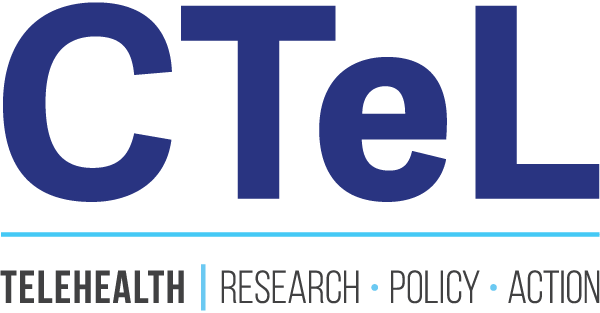Value-Based Patents: An Uncertain Future
Welcome to CTeL’s newest publication: Health inTEL! Paired with our weekly Policy Scoop, this blog goes beyond the headlines to provide deeper insights into the forces driving the digital health industry. For our first edition, we’ll be taking a closer look at how potential changes to patent fee structures could affect how developers operate, and what it means in the larger context of rapidly shifting policies.
Have any questions or stories/research to share with us? Email Lydia at lydiah@ctel.org.
President Donald Trump (L) at the ceremonial swearing-in of Secretary of Commerce Howard Lutnick (R). (commerce.gov)
Earlier this year, The Wall Street Journal reported that the Commerce Department is considering an overhaul of the patent system in an effort to increase revenue. While specifics have not been disclosed, the move would see the United States Patent and Trademark Office (USPTO) shift from collecting fixed fees throughout the patent process to assessing a fee based off the value of the patent.
Reporting on the Department’s deliberations indicates that fees of between 1% to 5% of a patent’s value could be assessed, likely through the patent maintenance fees paid 3.5, 7.5, and 11.5 years after the patent is issued. One estimate found 15,763 patents granted for digital health technologies from 2017 to 2021 worldwide, with a quarter of them (4052) granted by the USPTO. Depending on how the Administration implements this change should it decide to do so, potential impacts include:
Increased reliance on trade secrets over the patent process, especially for smaller companies with less margins for increased patent fees,
Fewer patents filed by larger companies with a focus on their most strategic patents, as pointed out by Foley & Lardner,
Technology price increases as a result of patent maintenance fee increases being passed on to practices, providers, insurers, and/or patients, and
Companies seeking to file patent applications in jurisdictions outside of the US with more predictable fee schedules.
There is also uncertainty over how USPTO would go about assessing the value of a patent. Common methods for valuation include:
Cost: How much did it cost to develop the patent, and how much would it cost someone to develop something similar?
Market: How have people paid for other, similar patents?
Income: How much income can one expect from this patent?
If the Administration moves forward with its plan, it is likely to face legal challenges. The current fixed-fee system is dictated directly from Congress in 35 U.S. Code § 41, which only gives the Administration flexibility to adjust fees “to reflect any fluctuations occurring during the previous 12 months in the Consumer Price Index, as determined by the Secretary of Labor.”
Furthermore, the America Invents Act limits USPTO to adjustments “only to recover the aggregate estimated costs to the USPTO for processing, activities, services, and materials relating to patents, including administrative costs with respect to such patent fees.” The proposal has also received pushback from industry representatives, including a coalition letter from the US Chamber of Commerce.
Even if the Commerce Department does not go through with implementing this policy change, it reflects the Administration’s broader desire to reshape the market and regulatory landscape. Earlier this year, CTeL hosted a webinar with Milton I. Koch and Tina Hu-Rodgers from Buchanan Ingersoll & Rooney to discuss the effects of new tariff policies on the digital health industry, followed-up by a coalition letter to the Commerce Department urging for tariff exemptions for medical devices. This also comes as officials at the Department of Health and Human Services, including Centers for Medicare and Medicaid Administrator Mehmet Oz, have called for policies to promote innovation and adoption in digital health.
Even in the relatively obscure area of patent fee schedules, we see the policy problems that have weighed on the government for decades: supporting access to the highest-quality care while ensuring program integrity and stability in the US’ fractured, decentralized, and high-cost healthcare system.

